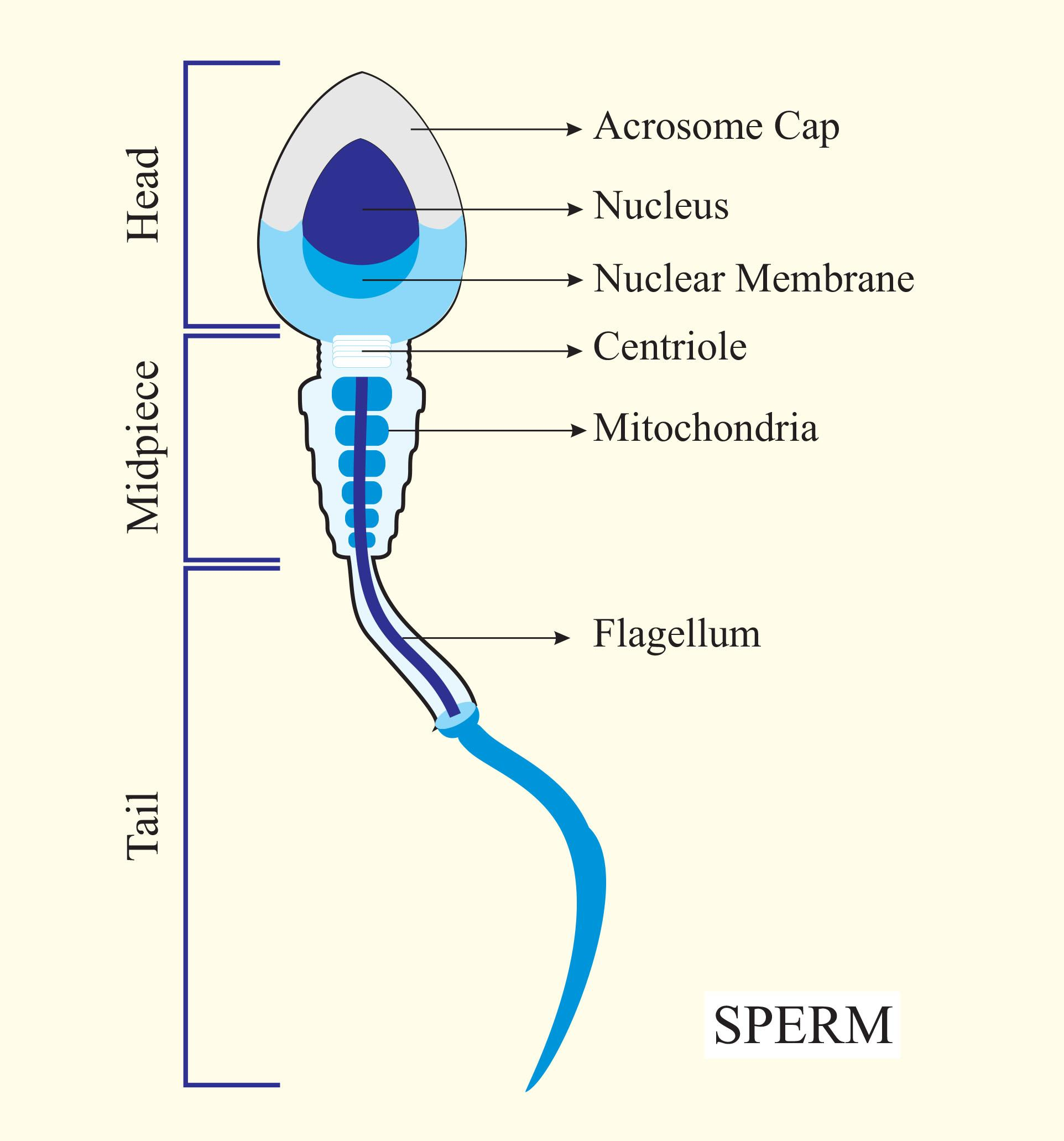
A middle piece of a sperm contains
(a)Mitochondria
(b)Chloroplast
(c)Axial filament
(d)Both (a) and (c)
Answer
471.9k+ views
Hint: A sperm almost only contributes its DNA to fertilization. Anything else (called the cytoplasm) that makes up a cell comes from the egg. And it makes sense, because mitochondria are in the cytoplasm, that they mostly come from the egg.
Complete answer:
Sperm is a gamete for men. It is approximately 60 microns in length. It includes the head, collar, center section, and tail. The distal centriole, mitochondria, and axoneme (axial filament) form the middle portion. Mitochondria supplies energy for the sperm movement in the middle piece.
The spermatozoon includes in its middle approximately 50-75 parts of mitochondria. 1 In somatic cells, the structure, and function of the sperm mitochondria are basically identical to mitochondria. The mitochondria of the sperm provide energy for the sperm's motion. The sperm mitochondria produce their own DNA (mitochondrial DNA; mtDNA) as well as the mitochondria in somatic cells. We will summarise briefly in the present review:
I the basic structure and role of the mitochondria;
(ii) the primary structure and characteristics of mtDNA;
(iii) mtDNA mutations; and
(iv) the maternal inheritance mechanism of mtDNA for a basic understanding of mitochondrial sperm.
Additional Information: In anisogamous forms of sexual reproduction (forms in which there is a larger, "female" reproductive cell and a smaller, "male" one), sperm is the male reproductive cell or gamete. Motile sperm with a tail known as a flagellum, known as spermatozoa, is produced by mammals, while some red algae and fungi contain non-motile sperm cells, known as spermatia. In pollen, flowering plants produce non-motile sperm, while motile sperm are present in some more basal plants such as ferns and some gymnosperms.
So, the correct answer is ‘both (a) and (c)’.
Note: There are 4 parts of the male gamete or sperm-head, neck, body, and tail. The head comprises the acrosome and the nucleus. There are centrioles in the neck, i.e., distal centrioles and proximal centrioles. The distal centriole has the function of forming the axial filament. Centrioles aid in the division of cells following fertilization. Mitochondria provide the movement of sperm with energy.

Complete answer:
Sperm is a gamete for men. It is approximately 60 microns in length. It includes the head, collar, center section, and tail. The distal centriole, mitochondria, and axoneme (axial filament) form the middle portion. Mitochondria supplies energy for the sperm movement in the middle piece.
The spermatozoon includes in its middle approximately 50-75 parts of mitochondria. 1 In somatic cells, the structure, and function of the sperm mitochondria are basically identical to mitochondria. The mitochondria of the sperm provide energy for the sperm's motion. The sperm mitochondria produce their own DNA (mitochondrial DNA; mtDNA) as well as the mitochondria in somatic cells. We will summarise briefly in the present review:
I the basic structure and role of the mitochondria;
(ii) the primary structure and characteristics of mtDNA;
(iii) mtDNA mutations; and
(iv) the maternal inheritance mechanism of mtDNA for a basic understanding of mitochondrial sperm.
Additional Information: In anisogamous forms of sexual reproduction (forms in which there is a larger, "female" reproductive cell and a smaller, "male" one), sperm is the male reproductive cell or gamete. Motile sperm with a tail known as a flagellum, known as spermatozoa, is produced by mammals, while some red algae and fungi contain non-motile sperm cells, known as spermatia. In pollen, flowering plants produce non-motile sperm, while motile sperm are present in some more basal plants such as ferns and some gymnosperms.
So, the correct answer is ‘both (a) and (c)’.
Note: There are 4 parts of the male gamete or sperm-head, neck, body, and tail. The head comprises the acrosome and the nucleus. There are centrioles in the neck, i.e., distal centrioles and proximal centrioles. The distal centriole has the function of forming the axial filament. Centrioles aid in the division of cells following fertilization. Mitochondria provide the movement of sperm with energy.

Recently Updated Pages
Master Class 12 Economics: Engaging Questions & Answers for Success

Master Class 12 Maths: Engaging Questions & Answers for Success

Master Class 12 Biology: Engaging Questions & Answers for Success

Master Class 12 Physics: Engaging Questions & Answers for Success

Master Class 12 Business Studies: Engaging Questions & Answers for Success

Master Class 12 English: Engaging Questions & Answers for Success

Trending doubts
The gas that burns in oxygen with a green flame is class 12 chemistry CBSE

The probability that a leap year will have only 52 class 12 maths CBSE

Describe the poetic devices used in the poem Aunt Jennifers class 12 english CBSE

And such too is the grandeur of the dooms We have imagined class 12 english CBSE

What does the god that failed refer to class 12 english CBSE

Which country did Danny Casey play for class 12 english CBSE




